Samuel Johnson
Click on the image below to visit the website.
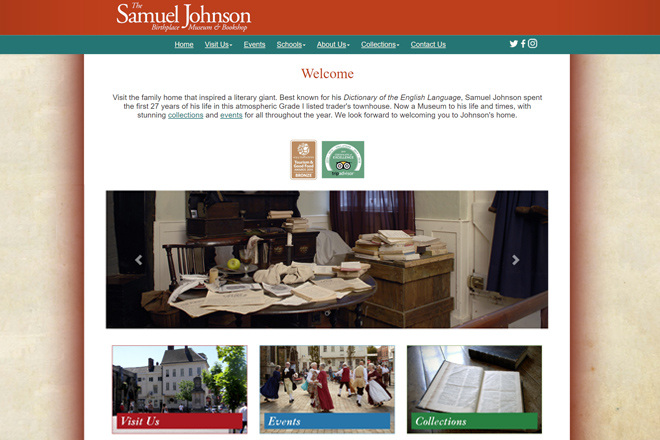
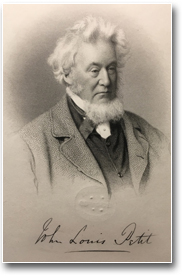
The Reverend John Louis Petit (1801–68)
J. L. Petit was a nationally acclaimed writer on church architecture and a renowned watercolourist.
Petit’s family moved to Lichfield in 1823, living at Lucy Porter’s old house, Redcourt, on Tamworth Street, until 1899 when the last of Petit’s sisters died. On taking holy orders, after graduating from Cambridge, Petit worked as curate at St Michael’s, Lichfield from 1826-29. Subsequently he was President of the Lichfield Working Men’s Association and Secretary of the Lichfield Architectural Society.
After stopping active church work in 1834, he published his first book, Remarks on Church Architecture in 1841, which won national acclaim and put him at the centre of the battles around ‘one correct style’ - Gothic. Followed by several further books and many articles, Petit was the leading opponent to the revival of Gothic for church architecture throughout the mid-Victorian period. From 1845 he was a frequent speaker at the annual Architectural Exhibition in London and regional architectural societies. He pioneered preserving medieval churches against alterative restoration, while praising the dynamism of railway architecture and calling for similar dynamism for new churches. He built one church, at Caerdeon, North Wales, grade 1. Petit was a Fellow of the FSA, honorary fellow of RIBA, and recipient of an honorary degree from Oxford to add to his MA from Cambridge
Petit was also a renowned watercolourist, in a style which foreshadowed impressionism; he painted medieval churches across Europe to support his architectural writing and speaking, and also produced landscapes and shipping pictures. Lichfield cathedral was his favourite subject, which he returned to whenever back from his frequent travels. He completed over 150 examples though many have not been traced. After his death a last exhibition of over 300 pictures was held at the Architectural Exhibition of 1869. Never for sale, his art was then closely held by the family before being widely dispersed in auctions in the 1980s and 1990s. Some examples are displayed in the Samuel Johnson Birthplace Museum.
His sister, published a long unfinished poem of Petit’s posthumously: The Greater and the Lesser Light, reconciling belief in God with science. Petit is buried in St Michael’s churchyard where there is a commemorative board. More information is at
www.revpetit.com
Joseph Addison - 1672-1719
Addison was born in Wiltshire, but soon after Joseph's birth his father was appointed Dean of Lichfield and the Addison family moved into the Cathedral Close.
Joseph Addison was educated at Lichfield Grammar School. As a young man his literary fame grew rapidly and with his friend Richard Steele, he contributed essays to the 'Tatler'. His later work, the 'Spectator', containing essays by himself, Steele, Pope, and others, is the most famous and influential of all 18th century magazines.
Addison presented the philosophical and literary ideas of his time to a wide audience in an easy, graceful style. In Sir Roger de Coverley, the Tory country squire, Addison created one of the great English comic characters.
As well as essays, Addison wrote poetry, political journalism, and a tragedy, 'Cato', which was one of the most popular plays of its day.
Like his fellow Lichfeldians, Johnson and Garrick, Addison is buried in Westminster Abbey.
Thomas Day - 1748-1789
Day was an eccentric figure who lived for a short time at Stowe House.
A charming character, if something of an intellectual lightweight alongside other members of the Lunar Society, he is today remembered for his children's book 'Sandford and Merton', an educational work inspired by the teaching of Rousseau.
Much of his life was taken up with attempting to find an ideal wife, to which end he brought up two orphan girls following the most contemporary progressive education system.
It needs hardly saying that he failed in his efforts, though towards the end of his life a more conventional marriage to Esther Milnes, a Derbyshire lady, brought both partners a great deal of happiness.
Richard Lovell Edgeworth - 1744-1817
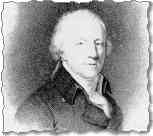
A close friend of Thomas Day, Edgeworth was a lively affectionate man and another occupant of Stowe House in the later years of the 18th century. Whilst sharing his friend's radical social and political views, Edgeworth channelled his ideas into several practical schemes. With his mechanical interests, Edgeworth investigated telegraph communications agricultural machinery, and improved means of transport. It was the latter which brought him to the attention of Erasmus Darwin and the Lunar Society.
In 1773 he married Honora Sneyd, Anne Seward's protegee, who had earlier rejected Thomas Day. After Honora's death three years later, he married her sister, Elizabeth. who had also rejected Day.
Like Darwin and Day, Edgeworth was interested in education and, with his famous daughter, Maria, he wrote a charming book, 'Practical Education'.
Muzio Clementi - 1752 - 1832
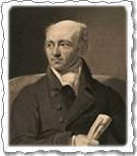
Muzio Clementi known as the ‘ Father of the Pianoforte’ was an Italian-born English composer, pianist, music teacher, conductor, music publisher, piano and instrument manufacturer, successful business man and a founder member of the Philharmonic Society of London (which became the Royal Philharmonic Society). Amongst his pupils were Johann Baptist Cramer, Ignaz Mocheles and John Field. Clementi was a friend of Beethoven and published Beethoven’s music in England.
Muzio Clementi was born in Rome. His father was a silversmith. Clementi was the eldest of seven children and as a child prodigy played the organ from the age of nine. At the age of fourteen Clementi was brought to England by wealthy landowner Peter Beckford MP and was commissioned under a seven year contract to play for Peter Beckford`s guests at his country estate in Dorset. In return Beckford provided Clementi with a good education in the sciences and languages. During this time Clementi was developing his own style of composition and playing, especially for the then evolving pianoforte.
In 1774, on release of his contract Clementi moved to the `musical scene` in London and held posts at important London venues including the Italian Opera House where he was an immediate success.
In 1780 Clementi embarked on a tour of Europe. In Paris he played for Marie Antoinette who recommended Clementi to her brother the Emperor Joseph II of Hapsburg. In Vienna, on Christmas Eve 1781, he took part in a famous friendly ‘piano dual’ with Mozart.
After long tours for several years in Europe to further his career as a composer, performer and fashionable teacher Clementi returned to London. He became a shrewd businessman and co-founded a firm for both music publishing and the development and manufacture of pianos. Muzio Clementi was a hugely popular and a very successful man of his time! He composed symphonies, sonatas and sonatinas but perhaps his most celebrated work is “Gradus ad Parnassum” in which he quotes Dr Johnson: “Every art is best taught by example”. These piano studies were extremely popular and a bestseller throughout the nineteenth century and still used today by music scholars.
Retirement to Lichfield
In 1828 Clement (aged 76) rented Lincroft House (now the Hedgehog Pub) from the Earl of Lichfield. The attractive Georgian house on the main Stafford road overlooking Lichfield`s cultural Cathedral City seemed a good choice for his second wife Emma Gisborne and their family of four children (their youngest child was only seven years old at the time). His wife Emma had relatives living nearby at Yoxall and Clementi was quoted as saying that he could `listen to good music at the Cathedral`. After a long and very successful career, in 1830 Clementi `officially` retired from many of his business activities and commitments. However he was still on the Lord Lichfield`s estate rental books at Michaelmas 1831. Clementi and his family moved to Evesham, where quite soon after moving he died suddenly on 10th March 1832. In recognition of his life and work as a musician he was buried with a `public funeral` in Westminster Abbey. The inscription on his grave reads: Muzio Clementi called “
Father of the Pianoforte”.
Elias Ashmole - 1617-1692
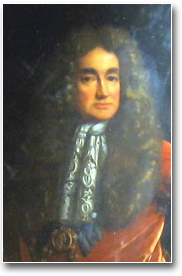 Elias Ashmole, the antiquary, was born in Breadmarket Street In 1617, the son of a saddler and a lady of good family. He attended Lichfield Grammar School and showed promise in several scholarly fields and in music.
Elias Ashmole, the antiquary, was born in Breadmarket Street In 1617, the son of a saddler and a lady of good family. He attended Lichfield Grammar School and showed promise in several scholarly fields and in music.
In the years leading up to the English Civil War he worked in London as a lawyer, but soon after the outbreak of war he moved to Oxford where he was in communication with the Royalist armies in Lichfield. Also at Oxford he began his passionate interest in astrology and other magical studies. After returning to London in 1646 he added botany, alchemy, anatomy, logic and medicine to his varied list of interests.
His first wife, Eleanor had died in 1641 in childbirth, and by his second marriage to Lady Manwaring, a lady 20 years his senior, he was able, with the help of her wealth, to form an important collection of astrological, medical and historical manuscripts.
His collection was enormously enriched in 1659 when the famous botanist, John Tradescant, presented his natural history specimens to Ashmole.
After the Restoration of Charles II, Ashmole's loyalty was rewarded by being made Windsor Herald, a post which enabled him to continue his research into the Order of the Garter. In 1672 these led to the publication of his most famous work, 'The Institutions, Laws and Ceremonies of the Most Noble Order of the Garter'.
Despite his attachment to magic, he was a founder member of the Royal Society, a group dedicated to practical scientific research.
In 1675 Ashmole began to make arrangements for his scholarly collection to be handed over to Oxford University, where it was to be housed in a special museum. This building - now known as the Old Ashmolean -was completed in 1683, the first public museum in the British Isles. As befitted a man with Ashmole's intense curiosity, it was also to be a centre for scientific research and remained so for over a century and a half.
Ashmole did not forget his native city; as well as charitable gifts, he gave several music manuscripts to the Cathedral, and a beautiful silver drinking vessel to the city, the Ashmole Cup, which can still be seen in the Treasury in the Lichfield Heritage Centre.
Eramus Darwin - 1731-1802
After Samuel Johnson, Darwin is the most significant of 18th century Lichfeldians. Darwin settled in Lichfield in 1756, living in the large house by the West Gate entrance to the Close in Beacon Street.
He established a reputation as a doctor, scientist, inventor and literary man and built up a national reputation for his humane and efficient treatment of medical problems, particularly insanity.
His scientific and technological studies contributed much to the work of the Lunar Society. This group - which also included Josiah Wedgwood, James Watt and Matthew Boulton - was one of the intellectual forces behind the Industrial Revolution. It would occasionally meet in Lichfield. Like many members of the Society, Darwin had radical political and religious views and on his few meetings with Johnson these may have been a cause for dispute. But, like Johnson, Darwin had a vast range of interests. At his gardens at the Abnalls and by Stowe Pool he did much botanical research and his opinions on evolution anticipated those of his grandson, Charles.
His literary career began after he and his second wife moved to Derbyshire in 1781. His poetry was an influence on poets like Shelley and Coleridge and is well seen in his most famous books, 'The Botanic Garden' and 'Zoonomia' which date from the last decade of his life.
His house is now a working educational memorial to the great man.
To find out more about Erasmus Darwin and the Darwin House project visit the Erasmus Darwin House Foundation site at www.erasmusdarwin.org
David Garrick - 1717-1779
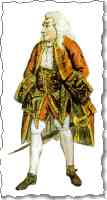
Although born in Hereford, Garrick's family home was Lichfield and his house stood on the site of the old library in Bird Street. (The house was pulled down in the 19th century and a plaque now marks the site).
Garrick's talents as a mimic were recognised early and he made his stage debut in the Bishop's Palace in the Close in Farquhar's comedy 'The Recruiting Officer'. He studied for a time at Edial Hall, the school run by Samuel Johnson on the Burntwood Road, and travelled to London with Johnson in 1737. He made his London debut in Colley Cibber's adaption of Shakespeare's 'Richard III'. It was an overnight sensation, Garrick becoming the most celebrated actor of his day. In 1749 he became co-manager of Drury Lane Theatre, his friend Johnson writing a prologue for his opening night.
As a manager Garrick introduced many much-needed reforms to his theatre, including improved lighting and clearing his stage of the richer members of the audience.
He also introduced his audiences to the lesser-known plays of the previous century, albeit often in altered versions.
He was also a dramatist of some distinction, writing some fine farces and comedies. As an actor he was pre-eminent in comedy and tragedy, classical and contemporary plays. To his audiences, used to the more formal acting of earlier times, Garrick's acting seemed astonishingly realistic. His playing of Shakespeare contributed to the developing bardolatory of the 18th century.
Off stage Garrick was a generous, warm-hearted friend. Though not an intellectual, he had close friends in artistic circles and amongst the more aristocratic classes. He became a rich man and collected paintings and rare early editions of plays, many of which are now in the British Library.
He retired from the theatre in 1776, but died only three years later, worn out by an exhausting career as actor-manager. He was buried in Westminster Abbey.
John Rowley (1670–1728)
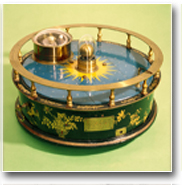
Born in Lichfield, John Rowley was the son of William Rowley (a sword cutler) and his wife Elizabeth. In 1682, John was apprenticed to a mathematical instrument maker in London, and subsequently set up his own business on Fleet Street. He produced a wide range of items – including sundials, drawing instruments, artillery scales, quadrants and globes – and was quickly recognised for his skills; in 1704, he was described by one author as ‘our Excellent Mathematical Instrument-Maker’.
Rowley attracted some distinguished patrons, such as Charles Boyle, Fourth Earl of Orrery. Around 1712, Rowley made for the earl a machine showing the motions of the earth, moon and sun, which represented an advance on its predecessors. In honour of his patron, Rowley called the machine (shown in the image) an ‘orrery’, which became the standard name for such devices. Rowley afterwards constructed other, more complex, orreries.
In 1715, a new form of portable sundial created by Rowley so impressed King George I that he made Rowley his ‘Master of Mechanics’. Much of Rowley’s time from then on was occupied with business for the Offices of Ordnance and Works. He constructed fire engines and ‘water engines’ (pumps to supply water) for the royal palaces and other sites; in this field he again demonstrated his mechanical brilliance, becoming an accomplished hydraulic engineer. He supplied mathematical instruments which were used in surveying Nova Scotia, and also played a part in standardising weights and measures.
Rowley died on 14 January 1728; he was buried at St Dunstan’s-in-the-West, Fleet Street. His fellow Lichfeldian Samuel Johnson later paid tribute to Rowley in his Dictionary, proudly asserting in his definition of ‘orrery’ that ‘it was first made by Mr. Rowley, a mathematician born at Litchfield’.
Anna Seward - 1742-1809 - The Swan of Lichfield
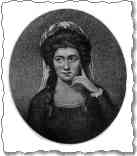
The Romantic poet, memorialist and letter writer, Anna Seward, came to Lichfield in 1750 when her father was appointed Canon Residentiary of Lichfield Cathedral, eventually occupying the Bishop's Palace, her home for the remainder of her life.
Anna formed an early close relationship with Honora Sneyd, who was adopted by the Sewards as a child. Their painful separation when Honora married Richard Lovell Edgeworth in 1773 prompted some of Anna's finest work. Anna herself had many offers of marriage, but never married. Devoted to caring for her sick father, she endured what she referred to as her "old-maidism", building a renowned literary coterie around herself and encouraging young, talented writers with support, advice and even money.
Her poem, the Elegy on Captain Cook, (1780) first brought Anna to national attention and gained her the title; the 'Swan of Lichfield'. There followed a poetical novel, Louisa, a volume, Llangollen Vale and a collection of sonnets. She collaborated with Dr Darwin, writing the exordium for his own major work, The Botanic Garden, and published his biography, Memoirs of the Life of Dr Darwin, on his death in 1802. As her renown grew, Anna corresponded with Henry Cary, Robert Southey and Samuel Taylor Coleridge.
Anna died in 1809, leaving her poetic works for Walter Scott to publish. She also left six volumes of letters which she had carefully edited for publication. These, as in her poetry, describe the major events in her life and also theorise on various contemporary issues. Her talent for anecdote provides wonderful historical detail in an accessible format.
After almost two hundred years of neglect, her poetry is now more favourably acknowledged and is beginning to reappear in Romantic anthologies. A monument to Anna Seward, the Swan of Lichfield, can be found in the Cathedral.
Our thanks to Teresa Barnard for this information.